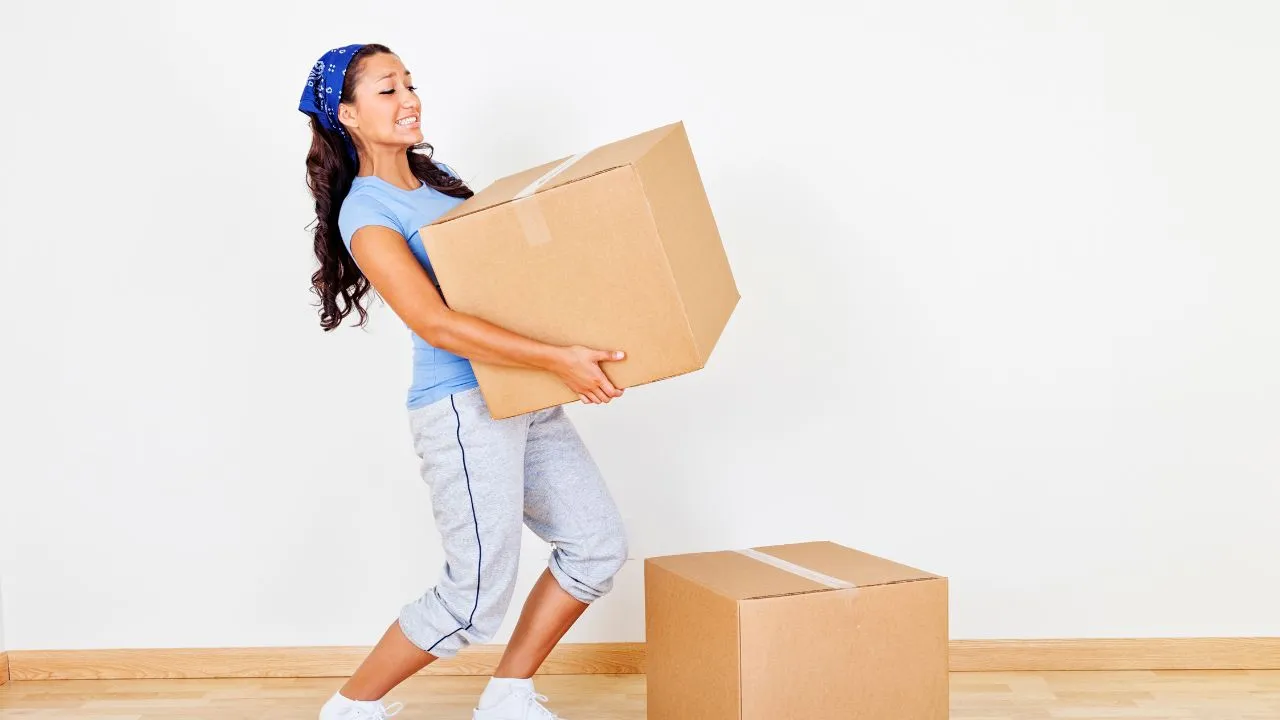As a housewife, do you ever struggle with backaches and sore muscles after a day of constant lifting and bending during household chores? Strange question, right? Since these tasks require extreme physical movement and different chores take up the whole day, pain and soreness are obvious. Whenever you lift heavy pots and pans while cooking or hoist baskets of laundry, it can put a significant strain on your body. Over time, these repetitive movements can take a toll on your muscles, joints, and spine, leading to chronic pain and long-term health issues.
A study states that nearly 70.6% of women suffer from chronic pain disease. Most of them are housewives who spend 15 out of 24 hours constantly working in the house. But what if you could do it all without the pain part? You read it right! If you too suffer through the same, please consider using these 6 safe lifting techniques while doing your household chores to lift without the pain.
Safe Lifting Tips for Housewives
Bend Your Knees, Not Your Back
Whenever you lift objects from the ground, always remember to bend your knees and sit in the squat instead of bending at your waist. This will help to use the leg muscles in the task rather than putting unnecessary stress on your back.
We also understand that it’s not the same for everyone. So if you find it difficult to squat down, simply skip the task or let someone else handle it.
Keep the Object Close to Your Body As You Lift
If you’re lifting a heavy box or a bag of groceries, try to hold that object close to your body after you squat. This will reduce the pressure on your spine and will make it easier to maintain proper posture as you lift. To help your back stay straight while lifting, bring your chest forward as you stand.
Use Your Legs to Lift
As mentioned earlier, please avoid bending your back to lift. When you do that, your back is doing all the work, not your arms, not your legs just the back. So once you have a tight grip on the object, use your legs to stand up.
Avoid Twisting Your Spine
When carrying objects, especially heavy ones, avoid twisting your spine or torso. Instead, move your entire body with your feet to change direction, keeping the object in front of you at all times.
Divide Heavy Loads
If you need to carry a heavy load, consider carrying it on multiple trips. Divide the load, and carry a little at a time. Don’t think of it as an extra effort, it’s just a safe lifting hack and an easier way to exercise. Additionally, this reduces the strain on any single muscle group, keeping your muscles pain-free.
Use Assistive Devices
Don’t be shy to use tools or equipment to make lifting easier and safer. Nobody is going to judge you. For example, use a dolly or cart for transporting heavy items, or use a step stool to reach high shelves and avoid the risk of falling.
Take Breaks and Listen to Your Body
Now, even if you’re lifting the right way, you still have to take breaks. Overexhausting your body might help to complete the task sooner, but the next day you’ll be hugging the bed due to unbearable body pain. That’s not worth the risk! Take a 10-minute break after each task, hydrate yourself, and don’t forget to stretch once you’re done.
If you’re feeling any sort of muscular pain that you find difficult to deal with, know that now you can heal from the comfort of your home. Click here to book an appointment with us for online physiotherapy, and become a part of your own healing journey.
Lifting Postures for Different Chore
Laundry Basket Lift
Bend and lift with your legs as you lift the basket. If you feel it’s too heavy, make multiple trips, and carry a little load every time. Also, when you’re unloading the laundry, make sure not to bend or lift too much as wet clothes weigh more than dry ones.
Carrying Grocery bags
Keep your legs hip-width apart. Keep the bags at the sides, then slowly bend with the knees and lift using core strength. Make sure not to turn and twist the body while carrying the bags. Hold the bags close to your body as you lift to put them in your car. Also, keep in mind to reverse the lifting technique while you place the bags on the floor.
Lifting the utensils while cleaning
Small or big, your wrist is always at risk of injury while cleaning dishes. When you lift a plate or a heavy pot make sure you place it on the kitchen floor, hold it tight with one hand, and use the other for scrubbing. Scrubbing while holding it in the air can strain your wrist muscles, bothering you with pain for the rest of the day.
Child Pick-Up
When lifting a child, squat down to their level, hug them close to your body, and stand up using the legs. Avoid bending forward or twisting while holding the child. While placing them in the crate make sure you bend with your hips and not the back.
Gardening Lift
Things might get a little tough here as you constantly have to bend. So make sure to follow the lifting tips mentioned above. Consider using a trolly for carrying heavy weights like batches of plants, soil bags, and heavy gardening tools. As you will have to work at the ground level for a longer period, consider squatting with multiple breaks or simply use a small chair.
Moving the Furniture
When moving furniture, for cleaning purposes make sure it’s not too heavy for your lifting capability. Since furniture liftings are an occasional thing to clean before the festivities or an event, make sure you empty the loads inside and then move it around. Get a helping hand to avoid injuries and straining the body.
By incorporating these safe lifting tips and techniques into your daily routine, you can easily avoid injuring yourself, allowing you to enjoy your role as a homemaker to the fullest. Remind yourself daily that Your health is priceless, so take care of yourself as you care for others. Happy lifting!


